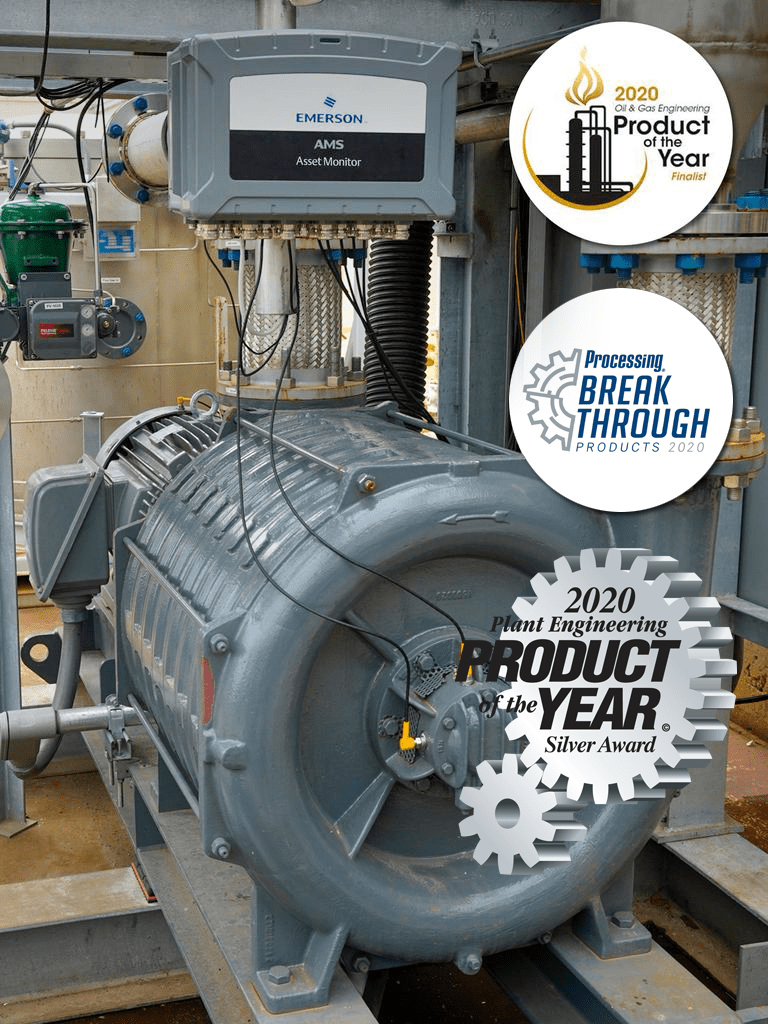Edge Asset Monitoring
Online condition monitoring of balance of plant equipment
Understanding the health of your important assets is essential for companies to achieve production and business goals. Emerson explains how edge analytics devices are helping to simplify the implementation of online monitoring systems, enabling predictive maintenance for balance of plant equipment. Although not always critical to the production process, balance of plant equipment, such as pumps and fans, still are important to the efficiency of plant operations. Increasingly, companies want to move away from run to fail strategies for this type of equipment, and instead implement online monitoring and predictive maintenance solutions that enable better maintenance scheduling repairs and ensure resources are available to deal with issues with the most critical equipment.
Online condition monitoring systems have been around for many years now, typically applied to the most critical assets within a plant, such as compressors and turbines, and often combined with protection systems that bring equipment to a safe position. In general, for applications relating to balance of plant equipment, such as pumps, fans and motors, and other assets less critical, this technology has been deemed too complex and expensive; however, these `less critical’ assets may still be important to efficiency of the manufacturing process.
Traditionally, the condition monitoring of balance of plant equipment has relied heavily on manually collected vibration measurements, which may be performed as infrequently as once per month. Taking such occasional snapshots of equipment health is not ideal, as it provides the opportunity for issues to occur in between readings that could cause damage or even unexpected failures. In addition, the task, which involves a maintenance technician collecting data from each piece of equipment using a handheld device, can take several days and often results in spending time on healthy machines. With maintenance resources often stretched, and recent restrictions around access and availability to site this can be a very inefficient use of time.
Although visual inspections should form a part of your maintenance regime there would be significant business benefits if all important plant assets had a level of online monitoring deployed, helping to reduce the need for manual readings, improving the efficiency of maintenance teams and increasing overall equipment uptime and performance. With this approach rather than having to rely on the availability of experts to analyse the data, maintenance teams would be provided with immediate alerts or access to simple equipment health scores and reports that allow them to understand equipment health and prioritise investigation and remedial work, thus deploying the available resources to where they are most effective, delivering best return from that resource.

Monitoring solutions
The availability of Industrial Internet of Things, wireless and edge-based analytics solutions has significantly lowered the cost and complexity of implementing online monitoring solutions and subsequently expanded the range of equipment that can be monitored. Wireless and edge monitoring devices provide users with relevant time process and condition monitoring information, with pre-configured analytics and actionable alerts to support more efficient and predictive maintenance strategies. This helps not only in terms of identifying issues before they escalate, but also by increasing the efficiency of maintenance teams.
Wireless vibration monitors, with embedded prescriptive analytics, deliver fast, accurate diagnostic information via WirelessHART networks. This extends vibration monitoring to a wide range of new applications, especially those in hard-to-reach locations and the more remote areas of a site such as effluent treatment plants, tank storage, pumping and compressor stations. Compact and rugged edge analytics devices that combine pervasive sensing with edge analytics are also helping to bridge the gap between performing routine manual inspections and higher-cost online data collection. These devices utilise vibration, temperature, digital and analogue inputs from traditional sensors and apply pre-configured analytic templates for the more common asset classes, deriving easily understood heath scores to alert personnel to worsening or critical situations. The advantage here is that the information is now readily available to onsite personnel without a reliance on specialist services to interpret the data first.
Previously, sensing technologies for process and condition monitoring have been siloed in different applications. The ability to combine these different data types helps to provide a better picture of the health of the machine or asset. By making that information securely available, this allows operations, process and reliability staff to all assist in monitoring plant assets. This is achieved by using CHARacterization modules (CHARM) technology, which allows inputs to be individually characterised as a vibration input and analogue or digital input/output, simplifying the wiring process and helping to provide a more holistic view of the asset.
Diagnostics and complex analysis are performed right at the machine, with overall asset health status and alerts sent to those that need it. Detailed real-time asset information about balance, alignment, looseness and bearing analysis is accessible from a users’ mobile device. This allows maintenance personnel and others within the organisation to immediately understand which equipment needs attention, enabling them to focus on examining and repairing those assets rather than having to take manual readings from multiple machines, many of which may be in a healthy condition, which is very time-consuming.

These new IIoT and edge-based technologies are not intended to eliminate operator rounds and manual data collection but should be viewed as complementary technologies that when deployed on the correct asset classes will help deliver a more efficient and effective maintenance strategy to help you meet your efficiency, reliability and sustainability goals.
